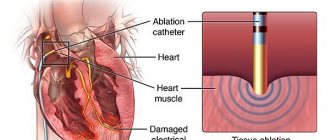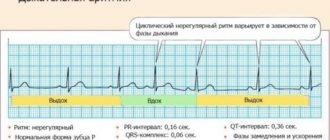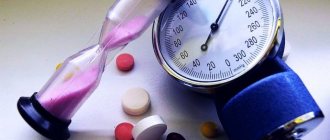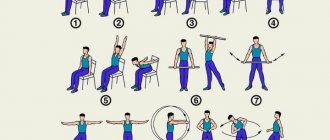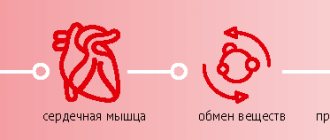As you age, your overall health deteriorates. But the most common pathologies are heart disease in old age. In terms of prevalence, they are ahead of even bronchopulmonary diseases, although they are caused by common causes. These are natural aging processes, due to which blood vessels become stiffer, the regulation of their tone is disrupted, blood pressure increases, and internal organs receive less oxygen. Sometimes bronchopulmonary diseases mask cardiovascular pathologies, and they are detected already in severe stages. Professional care and regular medical examinations offered by the boarding house for the elderly allow you to start treatment on time.
Age-related changes in the heart and blood vessels
The first plaques on the walls of the coronary vessels of the heart begin to appear after 25 years. In youth, this process occurs without consequences, but over time it can lead to atherosclerosis. And this is not the only change that occurs in old age. The heart increases in size, its walls thicken, and the volume of the left ventricle changes. Due to the thickening of the wall, blood flow decreases, the heart chamber fills more slowly, and overall the efficiency of the heart noticeably decreases. In old age:
The contractility of the heart muscle decreases. Over the years, the number of myocardial cells becomes smaller because they do not have the ability to self-renew. As a result, dead cells are replaced by connective tissue, and the remaining cardiomyocytes bear a heavy load. But often they cannot provide normal contractions. The functioning of the heart valves deteriorates. This most affects the functioning of the aortic valve and mitral valve, which lose their former flexibility. If calcium deposits occur, this indicator decreases even more, and the valve apparatus cannot evenly distribute blood throughout the heart cavities. The heart rhythm is lost. Blood transfusion requires impulses; they are generated by special cells of the cardiac conduction system. As there are fewer of them over the years, the heart rhythm is disturbed.
All this leads to the development of various diseases - from hypertension to atherosclerosis.
Passion for sports
If at the beginning of the 2000s young people had a blast - many smoked and drank, then among modern young people adherents of a healthy lifestyle predominate. They regularly participate in marathons (42 km races), swims and other sports competitions. Few of them realize that excessive physical activity destroys the heart as quickly as alcohol and smoking.
“During training, toxins (waste materials) accumulate in the body, which are eliminated gradually,” says the head of the Department of Preventive Medicine and Fundamentals of Health at NSU. Lesgafta professor Rosa Tsallagova. – If workouts follow one after another, toxins accumulate, poison the body, causing exhaustion, which leads to breakdowns, including in the cardiovascular system (heart attacks and strokes). Therefore, for example, athletes’ training is calculated individually, taking into account their genetic passport. The intensity of activities of ordinary citizens should also be determined by their level of preparedness and well-being.”
What heart diseases do older people face?
Even those who lead a healthy lifestyle have problems over the years. All common heart diseases in older people can be divided into three groups:
- pathologies associated with valve dysfunction (heart disease);
- disruption of the heart muscle;
- vascular pathologies and the consequences caused by them (primarily hypertension, coronary heart disease and its complications).
The greatest danger is posed by atherosclerosis, atheroma and coronary heart disease (hereinafter referred to as IHD).
Environmental stress
It is no coincidence that wealthy people all over the world try to live either in quiet, green areas or outside the city. Stress is not only psychological, but also environmental. The heart is aged by noise, bright night light, and the content of harmful substances in the air. British scientists compared the health status of those who go to work in the morning through the city center and those who get to work through the park. The study showed that even such little things cause damage to the heart muscle - those who were forced to move around the polluted center had significantly lower vascular elasticity than those who enjoyed walking routes.
Atherosclerosis in the elderly
Atherosclerosis is a chronic disease, and it develops slowly enough to allow time to take action and prevent dangerous consequences. With atherosclerosis, lipoproteins are deposited in blood vessels. After some time, connective tissue begins to grow, plaques form, and this leads to a decrease in the lumen of blood vessels. As a result, the blood supply to all tissues is disrupted. Blood clots are especially dangerous because they can block blood flow.
One of the features of atherosclerosis is that it affects not only the aorta, but also the renal and cerebral arteries. And these organs in older people require special attention.
Risk factors for atherosclerosis are:
- high blood pressure above 140/90 mm Hg;
- diabetes;
- obesity, mainly of the abdominal type, in which fat deposits accumulate in the abdominal area;
- elevated cholesterol levels.
Where the arteries experience the greatest hemodynamic load, fatty plaques are deposited on the walls and scars appear. This change in the walls is called atheroma. Over the years, calcium accumulates in it, this leads to thinning of the walls of blood vessels, and under unfavorable circumstances, atheroma rupture can occur. Pieces of blood clots and fatty deposits can travel through the bloodstream throughout the arterial system, causing damage to internal organs.
This can be avoided by following a therapeutic diet, controlling weight, and performing a set of exercises. It's hard to follow this at home. But a private boarding house that provides paid care for the elderly provides such an opportunity.
How to restore a heart weakened by disease
Cardiologists know how to strengthen the heart of an elderly person. Their advice is especially needed for people who have suffered serious illnesses or pathologies that have caused complications in the main muscle. An experienced physician will help you adjust your lifestyle, choose the right diet and medications. All this taken together significantly prolongs the life of old people, which means it is necessary:
- Visit a cardiologist regularly.
- At least once a year, undergo a comprehensive examination of the cardiovascular system - an electrocardiogram, ultrasound of the heart, biochemical tests for the composition and quality of blood.
- If symptoms of heart disease appear, as well as if test results worsen, take action and increase the number of visits to a specialist.
- Monitor the health of not only the heart, but also other vital systems. You can become fixated on one thing and overlook serious pathologies of the lungs, digestive system, etc. These processes can also negatively affect the heart condition of an elderly person.
- Do not self-medicate. Medicines should be taken only in consultation with a doctor and adhere to the dosage and frequency prescribed by the specialist. Spontaneous use of drugs (when you feel bad) in arbitrary quantities can have a negative effect.
Read the material on the topic: What should be the proper care for the elderly
Features of coronary heart disease in old age
IHD is one of the most common heart pathologies. Its development is caused by vasoconstriction, which eventually impairs the functioning of the heart. Physical damage is also possible. Moreover, the heart muscle suffers the most. But even if it continues to work, albeit not as efficiently as in a healthy person, the body begins to suffer due to lack of oxygen.
The development of atherosclerosis often leads to this situation. Therefore, coronary disease is caused by the same factors - high blood pressure, diabetes, excess weight.
Features of the manifestation of IHD in old age are:
- Absence of bright emotional coloring of attacks.
- Unusual pain sensations - they arise on the left, but radiate to the neck, back of the head and lower jaw, which is why the patient does not immediately turn to a cardiologist.
- No intense pain. A person feels compression in the area of the heart, heaviness on this side, a feeling of compression in the chest and even the shoulder joint.
- Sudden jumps in blood pressure, sometimes neurological disorders, the appearance of shortness of breath.
On the one hand, in older people the picture of IHD is often blurred and there are no strong manifestations. On the other hand, signs of the disease at this age may appear in the morning after minor physical activity.
IHD develops in various forms, the most common being myocardial infarction, angina pectoris and heart failure, which will be discussed below.
Wild youth
Director Andron Konchalovsky , who is in excellent physical shape at 82 years old, often repeats the Chinese proverb: “You need to die young and do it as late as possible.” Doctors agree with this statement. Optimal health indicators that persist into adulthood are a necessary condition for maintaining a youthful heart.
“Another unobvious factor that seriously affects the functioning of the heart is exposure (in medicine, this word means the duration of the influence of a harmful factor on the body), explains the head of the Department of Cardiology of the National Medical Research Center. Almazova, Doctor of Medical Sciences, Professor Svetlana Villevalde . – You need to adhere to a healthy lifestyle not only throughout your life, starting from a young age. Revelry youth will definitely come back to haunt you with cardiovascular diseases in old age, even if by this time you begin to closely monitor your health.”
Angina and its features
When considering the clinical forms of coronary heart disease in the elderly, it is worth starting with angina. This pathology is due to the fact that insufficient blood volume reaches the myocardium. This may be caused by narrowing of the lumen of blood vessels due to atherosclerosis. But sometimes the reasons are vasospasm due to:
- Sudden changes in temperature or atmospheric pressure. Air humidity also has an effect.
- Regular overeating. When the gastrointestinal tract is full, the diaphragm occupies too high a position, and due to bloating, the blood supply to the heart deteriorates.
- Excessive physical activity inappropriate for age and health.
- Poor diet with a predominance of fatty foods.
When the first signs of angina appear (mainly pressing pain behind the sternum on the left), you need to consult a doctor who will prescribe:
- drug therapy;
- a set of exercises for therapeutic gymnastics;
- following a diet aimed against the development of atherosclerosis (sometimes it is necessary to additionally arrange fasting days).
If the patient lives alone, it is difficult to monitor compliance with these measures. Another thing is the Dobro private home for the elderly, where experienced staff will measure your blood pressure and monitor your pill intake. In addition, they provide balanced nutrition taking into account the personal recommendations of a nutritionist.
Myocardial infarction in old age
An acute attack of coronary artery disease can lead to myocardial infarction. This is a disease in which a section of the heart muscle dies due to insufficient blood supply. Subsequently, a scar appears in this place. Typically, a heart attack is caused by a blockage of the coronary arteries. This occurs due to a detached blood clot. It, in turn, is a consequence of many years of fat deposits.
The classic symptom of a heart attack is the appearance of severe pain in the center of the chest. It is described in different ways - as squeezing, pressing, dull. As with angina, it radiates to the left arm, jaw or neck. The difference is that in this case the pain is stronger, its attacks last longer. Sometimes there is a feeling of squeezing the heart itself.
A person's skin turns pale and becomes damp. Pulse is weak but rapid. Blood pressure can be either low or high. If a large area of the heart muscle is damaged, then other symptoms appear - blueness of the skin due to lack of oxygen, shortness of breath.
The pre-infarction period can last a long time, from several days to one and a half months. If you detect signs of the disease in time, you can prevent its further development, that is, the death of myocardial cells will not occur. But for this, the patient must be under constant supervision - for example, in the private boarding house "Dobro".
If it was not possible to prevent the development of the disease, then an acute period begins, which on average lasts about 10 days. This is followed by the subacute and post-fract period. At this time, the patient also needs special care, since his condition stabilizes, but at the same time, a relapse may occur. You need to follow a diet, take medications prescribed by your doctor, avoid physical activity and stress, and avoid making sudden movements.
The private boarding house will provide professional care with constant monitoring of blood pressure and pulse - at least three times a day. In a few weeks, if the doctor allows, you can start training. Psychological support and social rehabilitation play an important role at this stage.
Heart failure
This clinical form of IHD refers to a condition in which the heart is unable to provide normal blood supply to other organs. Heart failure develops as a consequence not only of IJS, but also of myocarditis - an inflammatory disease of the heart muscle, acquired heart defects, and some rheumatic pathologies.
For treatment, it is necessary to carry out constant ECG monitoring, regularly do stress tests, etc. Treatment is mainly medicinal, and methods such as following a special diet and drinking regimen, losing weight, and giving up bad habits are also provided. But a balanced diet and adequate sleep also play an important role.
Work at night
The heart rate cycle has two features - it becomes more frequent during the day and stops in the evening when a person goes to bed. This gives the heart a chance to recover. Nature provides for people to be active during the day and rest at night. Seven hours of sleep a night is the minimum required for normal heart function. It is important not only to get enough sleep, but also to go to bed at the same time. If you have to work on a shift schedule occasionally, there is a chance to avoid harmful consequences. But if you work regularly at night, you cannot avoid serious heart problems.
Arrhythmia in old age
Over the years, the heart rhythm becomes disrupted. It can slow down (bradycardia) or speed up (tachycardia), a distinction is made between conduction disturbances and the occurrence of an electrical impulse. This form of the disease is called extrasystole.
Arrhythmia is rarely an independent disease. But it often acts as a symptom of other problems in the body, such as heart disease or respiratory system disease. If an arrhythmia is detected, the doctor prescribes additional diagnostics.
